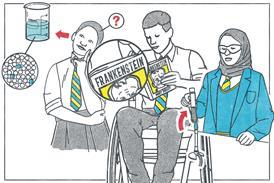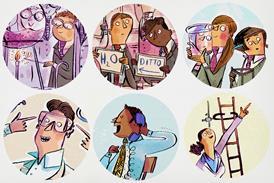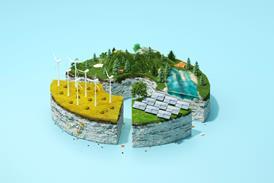Overloaded curriculums bursting at the seams limit hands-on practicals
‘Let’s get rid of the solar system entirely – I don’t think we need it!’ Laughter and murmurs of agreement met this semi-serious suggestion, made by professor of science education Christine Harrison at the Association of Science Education’s 2025 conference, where teachers and technicians examined why we’re doing fewer experiments in schools.
Ideas bounced around the room like free radicals
Nothing creates enthusiasm quite like free pencils and a shared problem. Discussion yoyo-ed from contemplating a return to coursework-based experiments, cutting back on the breadth of taught content and ditching GCSEs altogether. Weighed down by freebies and science-related paraphernalia, ideas bounced around the room like free radicals.
Here’s the problem: students aged 14–16 are doing 20% fewer hands-on practicals than in 2016, according to the Royal Society’s 2023 Science Education Tracker (SET). Almost half of 11–16 year-old learners watched practical videos at least once a fortnight, but just over a third did hands-on work.
Barriers to practicals

The 2024 Science Teaching Survey from the RSC, RSB and IOP puts the top issues impacting student learning outcomes as too little non-contact time, an overloaded curriculum and insufficient school funding.
Here’s the problem: students aged 14–16 are doing 20% fewer hands-on practicals than in 2016, according to the Royal Society’s 2023 Science Education Tracker (SET). Almost half of 11–16 year-old learners watched practical videos at least once a fortnight, but just over a third did hands-on work.
Practically imperfect
The Royal Society of Chemistry’s 2024 Science Teaching Survey puts the top issues impacting student learning outcomes as too little non-contact time, an overloaded curriculum and insufficient school funding.
These aren’t just numbers: ASE conference panellists expressed similar frustrations. Jon Hale, Korede Komolafe, Hannah Macgregor-Dignan and Luke Jones, led by lead science technician and ASE chair Jane Oldham, shared their opinions with an audience that hummed with agreement.
Korede, acting head of biology at London’s Graveney School, put it succinctly: ‘The bloated curriculum is not giving teachers an environment in which they feel confident enough to implement practicals.
‘If environmental pressure is to make you less likely to do practical work, you will do less practical work. What’s more important, my students’ welfare or practicals? I’m going to choose welfare. I struggle to see how any of that changes, unless the national curriculum does.’
The Royal Society SET showed that more than two thirds of 14–16 students wanted to do more practical science in 2023, an increase of 10% since 2016. Going hand in hand is a lack of confidence: 81% of newly qualified science teachers find teaching practicals tricky.
Implementing change
Sophie Marsland is the assistant principal at Darwen Vale High School, Blackburn. When she started teaching, they assessed practicals by coursework. She believes the change to required practicals – not having to do them, just having to see them – is another potential reason for the decline in taught practical work.
Speaking to Sophie after England’s education secretary, Bridget Phillipson, announced the interim education report and her proposed reduction to the volume of taught content, we giggled about what they should cut. Sophie said: ‘I’m sorry, but do we really need to teach students the exact structure of a leaf?’
Time to get serious. Sophie reeled off a series of suggestions to help early career teachers (ECTs) gain confidence teaching practicals. ‘Nobody’s a triple threat, no one has a degree in biology, physics and chemistry. If you create subject leads you have a go-to person for advice on particular practicals, building confidence across the team.’
As an ECT, Sophie watched a lot of videos, booked time to go through experiments with her lab technician and, helpfully, she had a peer mentor.
‘A teacher guide would be great – a cheat sheet to how I teach electrolysis, let’s say, because I know I teach it well. The pedagogy behind it, how I teach it, why I say what when,’ she added.
When you build confidence in pupils and teach them that experiments are more than just the volume they measure or bubbles they count … they become more engaging
For Jon, assistant head at Belvoir College Jersey, it’s all about tangible results. During Covid-19, when exams went out of the window and grades were teacher assessed, he saw a change in his students. After building her confidence in practical work, one pupil told him, ‘it’s actually fun now!’
When you build confidence in pupils and teach them that experiments are more than just the volume they measure or bubbles they count, but a validation of results and understanding of the science behind them, they become more engaging. Jon said: ‘Practicals don’t need to be complicated; most important is making them valuable.’
Kristy Turner is a science teacher at Bolton School and trains many ECTs. She’s seen the issues they face, from strict curriculum fidelity to non-contact time squeezed to its absolute minimum.
‘My advice would be to join a community like the RSC – discovering that your situation isn’t normal can be a relief. Alternatively, that you are actually in quite a good position to help other people. Also, get close to your technicians. I’m still friends with some of mine and it made things much easier for me. They know the practicals inside out, they’ve been doing them for years.’
Whether it’s planets or plants, Bridget Phillipson’s report promises to dial back on taught content. It will be interesting to see how teaching science changes as a result, and if we can schedule practicals more often.
Frances Briggs is a secondary school science technician











2 readers' comments